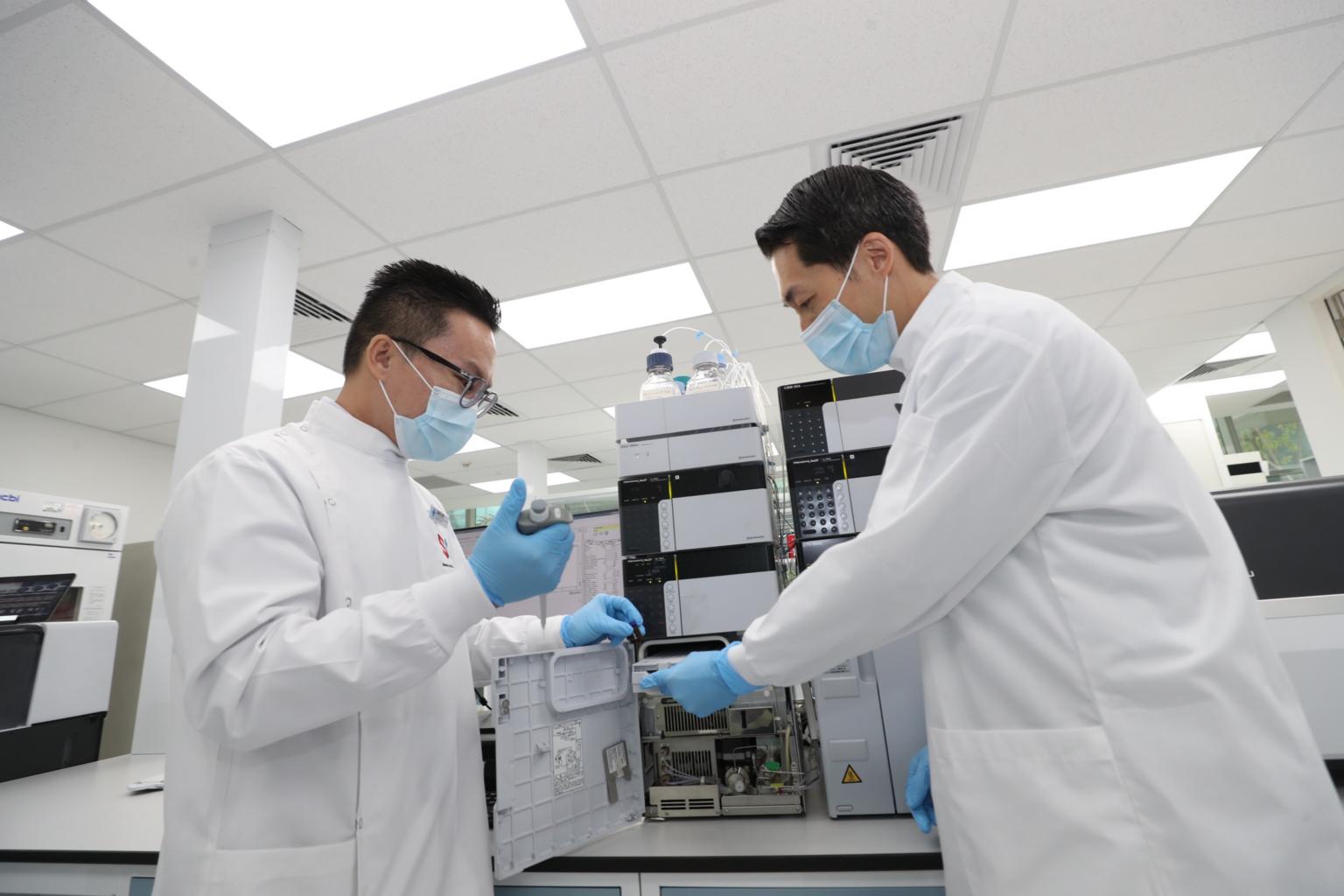New high-tech lab that allows docs to customise treatment for patients with chronic diseases opens
Sign up now: Get ST's newsletters delivered to your inbox

Dr Daryl Hee (left) and clinical assistant professor Troy Puar operate the liquid chromatography tandem mass spectrometer.
ST PHOTO: TIMOTHY DAVID
Follow topic:
SINGAPORE - A cutting-edge research lab that will allow doctors to offer personalised treatment of patients with chronic diseases such as hypertension was officially opened on Wednesday (Jan 27).
The centre uses technology called liquid chromatography coupled with tandem mass spectrometry that can accurately analyse clinical samples. This will help doctors tailor more individualised treatment instead of taking a one-size-fits-all approach.
The new facility - called the Shimadzu-CGH Clinomics Centre - is starting with tests for hypertension, which affects one in four adult Singaporeans and is a leading cause of heart disease and strokes.
The $500,000 mass spectrometer can take a tiny sample- 1 to 10 microlitre - of blood and accurately measure the two hormones -aldosterone and renin - that can identify the type of hypertension a patient has.
The machine can also detect a patient's hypertensive drug concentration from tiny urine samples, allowing doctors to ascertain if they are adhering to the medication schedule and to understand why their hypertension still persist despite medicine.
"Treatment of hypertension is not precise as each patient is different and their cause of hypertension may differ," said clinical assistant Professor Troy Puar, the principal investigator and consultant in endocrinology at Changi General Hospital (CGH), which is operating the lab with Japanese firm Shimadzu (Asia Pacific).
"When one medication does not work, doctors may choose to increase the dose, add another medication, or switch to another medication.
"By measuring precisely the hormone measurements that define the type of hypertension that each patient has from the outset, doctors are able to know which antihypertensive medication works best for the patient, thereby enabling delivery of precise and personalised medicine."
It is now understood that hypertension is due to either excessive vasoconstriction (tightening of blood vessels) or excess salt and blood volume. Also, about 5 per cent of hypertension patients have a curable form called primary aldosteronism, said Prof Puar.
Mass spectrometry has been used here only for research. This meant that for the past five years around 1,000 hormone samples a month from hypertension patients have been pooled and sent to United States labs. It takes about two weeks before the results come back.
The new lab, which was officially opened by Deputy Prime Minister and Finance Minister Heng Swee Keat, will reduce waiting time to about one to two days.
It could start receiving patient samples in as soon as six months, or up to two years, depending on how soon the required validations come," said Prof Puar and Dr Daryl Hee, a senior manager at CGH who is charge of the new lab.
It could eventually process samples from the region.
The opening ceremony, which was delayed by the pandemic, was held at Shimadzu's premises at Science Park Drive, with speeches by Shimadzu president Teruhisa Ueda, Mr Tetsuya Tanigaki, managing director of Shimadzu (Asia Pacific), and CGH chief executive Ng Wai Hoe.

